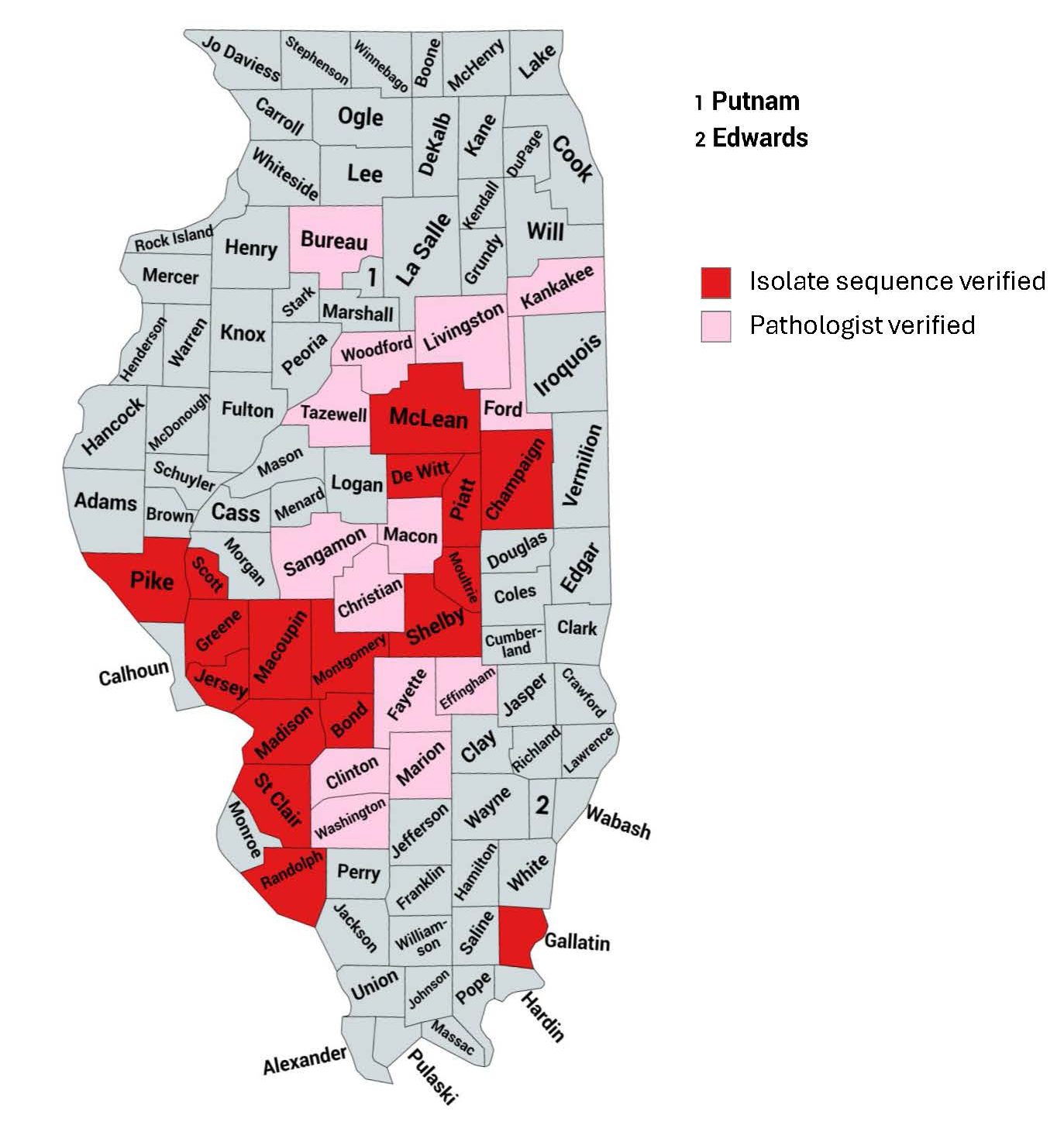Last fall, I wrote Chronicles of Red Crown Rot: Part: 1, detailing our visit to a farm near Pittsfield, Illinois, that had been plagued with red crown rot for at least five years, resulting in yield losses of 50 percent or more. I also provided background information and discussed current management practices for red crown rot. For the second consecutive year, we have worked with Dr. Steve Clough from USDA ARS and his lab to offer free diagnosis of red crown rot in Illinois. As this is a new disease for the state, many are eager to know where it is being found.
Where is red crown rot in Illinois?
What is being done about red crown rot?
Dr. Boris Camiletti, the new University of Illinois plant pathologist, has been eager to dive into research about red crown rot. After observing an inoculated red crown rot trial at the Orr Center, as well as other red crown rot trials, he suspects there could be differences in symptoms and yield among some commercial soybean varieties. The challenge is that, without a “strong” resistant control, it is difficult to make accurate comparisons. Therefore, he is interested in conducting soybean variety testing in both the greenhouse and the field. He is planning greenhouse tests to explore “rapid” vs. “slow” emergence varieties, thanks to funding from a multi-state United Soybean Board project. The USDA group in Urbana is also running germplasm screens for resistance.
I have also been helping Dr. Camiletti plan a soybean variety testing trial at a red crown rot location for next season. We have contacted several seed companies to gauge their interest in the trial. There is some interest, although funding is uncertain. We aim to include as many companies and varieties as possible. If you have contacts at seed companies, please share them so we can reach out.
In 2024, the Illinois Soybean Association checkoff program funded the following red crown rot research in Dr. Boris Camiletti’s lab:
- A model to study disease distribution in the fields using satellite imagery.
- Plot experiments using soil that was inoculated with RCR 4 years ago.
- Evaluation of sulfur treatments in the greenhouse.
- Field trials: seed treatments and 2×2 applications at the U of I Orr Center.
- Farm trial: seed treatments in two locations.
Additional work was conducted in the greenhouse, growth chamber, and through in-vitro tests to assess nanoparticles.
In 2025, the Illinois Soybean Association checkoff program will fund the following red crown rot research in Dr. Boris Camiletti’s lab:
- Interaction with soybean cyst nematode and the effect of fungicides and relevance of infection timing.
- Use of satellite imagery to study the temporal and spatial distribution of the disease.
- Explore biocontrol options.
Efforts will also focus on continuing field trials and on-farm research to evaluate seed treatments, 2×2 applications, and variety testing.
Dr. Camiletti should have all this season’s red crown rot trial data collected by November and after that, he hopes to update us by way of a Field Advisor webinar, so stay tuned.



 and then
and then